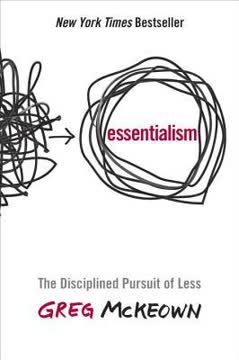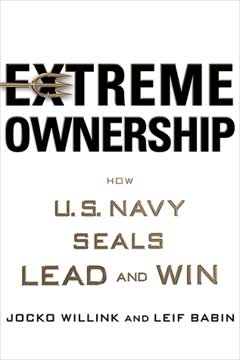Key Takeaways
1. Trust is essential for relationships and success.
For organizations to thrive, trust is not a nice-to-have; it’s a must-have.
Foundation for success. Trust is the critical factor that enables smooth interactions and goal achievement, whether in personal relationships or within organizations. When trust is present, people work together effectively, changes are implemented smoothly, and shared goals are accomplished. Conversely, a lack of trust leads to setbacks, conflict, and failure.
Impact on well-being. Beyond just productivity, trust fosters productive, joyful relationships and a harmonious atmosphere. The animal parable illustrates how the lack of trust between Woof and Whiskers created chaos and threatened the well-being of the entire household. Similarly, Mr. Berryhill's stress at work due to trust issues with his boss impacted his home life.
Vital for leaders. The ability to build trust is increasingly recognized as the defining competency for leaders. High-trust cultures see creativity flourish, productivity rise, and barriers overcome, directly impacting the bottom line. Without trust, cynicism reigns, progress halts, and self-interest overrides the common good.
2. Trust is built through behavior, not just intention.
Trust is a delicate thing. It takes a long time to build, yet you can blow it in a matter of minutes.
Actions speak louder. While good intentions are nice, trust is ultimately earned through consistent, observable behaviors. It's not enough to say you are trustworthy; you must demonstrate it through your actions. One incident of inconsistent behavior can quickly erode trust that took a long time to build.
Boosters vs. Busters. Behaviors can either build trust (Trust Boosters) or undermine it (Trust Busters). Understanding which actions fall into each category is the first step to becoming more trustworthy. For example:
- Trust Buster: Producing poor results, violating confidences, ignoring others.
- Trust Booster: Getting quality results, keeping confidences, showing interest.
Conscious effort required. Building trust isn't something that just happens; it requires conscious awareness and effort to practice Trust Boosters and eliminate Trust Busters. The animals in the parable had to actively change their ingrained behaviors to build trust with each other and the humans.
3. Trust is a matter of perception.
Trust is in the eye of the beholder.
Different lenses. What one person considers trustworthy behavior, another might view with suspicion, based on their own experiences and filters. This difference in perception is why trust issues can be so difficult to resolve – people are seeing the same situation through completely different lenses.
Need for common language. Because perceptions vary, a shared framework is needed to discuss trust issues effectively. Without a common language, attempts to resolve trust breakdowns can lead to misunderstandings and further conflict, as seen when Whiskers and Woof initially argued about whose fault the broken dishes were.
Understanding others' views. To build trust, it's crucial to understand how your behavior is perceived by others, not just how you intend it. This often requires seeking feedback and being open to the possibility that your actions are unintentionally eroding trust. The elephant analogy highlights how different perspectives can lead to vastly different understandings of the same reality.
4. The ABCD Model provides a common language for trust.
Clearly, we needed a common framework, a model that created a mutual language for trust.
Four key elements. The ABCD Trust Model™ simplifies the complex concept of trust into four core behavioral components: Able, Believable, Connected, and Dependable. This model provides a shared vocabulary for diagnosing trust issues and discussing them constructively.
Framework for discussion. By categorizing behaviors, the model allows individuals and groups to pinpoint specific areas where trust is strong or weak. Instead of vague accusations like "I don't trust you," conversations can focus on concrete behaviors related to the ABCD elements.
Applicable everywhere. The ABCD Model is designed to be used at all levels of an organization and in personal life. It provides a universal language for understanding and building trust, whether between colleagues, family members, or even animals in a parable.
5. Being Able means demonstrating competence.
When you demonstrate competence and skills, you are ABLE, which builds trust.
Capability matters. Trust in someone's ability is based on their demonstrated skills, knowledge, experience, and capacity to get quality results and solve problems. If you consistently fail to perform or lack the necessary skills, people cannot trust you to be Able.
Effort and results. Being Able isn't just about having innate talent; it's about applying your skills, striving for excellence, and using your abilities to assist others. Mr. Berryhill's boss questioned his ability because he wasn't getting results, but Mr. Berryhill rebuilt trust by developing new skills and seeking mentorship.
Trust Boosters for Able:
- Get quality results
- Solve problems
- Develop skills
- Use skills to assist others
- Strive to be the best
Woof demonstrated he was Able to Whiskers by digging a hole in the fence and finding catnip and a fish, showing he had the know-how to help her.
6. Being Believable means acting with integrity.
When you act with integrity, you are BELIEVABLE, which builds trust.
Honesty and character. Believability is rooted in honesty, sincerity, and ethical behavior. It means keeping confidences, admitting when you are wrong, avoiding gossip, and showing respect for others. Lying, even little white lies, or talking behind backs quickly erodes believability.
Words matching actions. A key aspect of being Believable is ensuring your words align with your actions. If you say one thing but do another, people will question your sincerity and integrity.
Trust Boosters for Believable:
- Keep confidences
- Admit when you are wrong
- Be honest
- Avoid talking behind people’s backs
- Be sincere
- Be nonjudgmental
- Show respect for others
Woof demonstrated he was Believable by apologizing to Whiskers for chasing her up the tree and by refusing to gossip about her with the other animals. Mrs. Berryhill rebuilt Kylie's trust by admitting she hadn't scheduled Billy's swimming lessons and immediately taking action.
7. Being Connected means caring about others.
When you care about others, you are CONNECTED, which builds trust.
Empathy and relationship. Connectedness is about showing genuine interest in others, listening well, showing empathy, and sharing about yourself. It's about building a bond and making people feel seen and valued. Ignoring others or being insensitive busts trust in this area.
Open communication. Sharing information about yourself and asking for others' input are crucial for building connection. It creates a two-way street where people feel comfortable relating to each other.
Trust Boosters for Connected:
- Listen well
- Praise others’ efforts
- Show interest in others
- Share about myself
- Work well with others
- Show empathy for others
- Ask for input
Whiskers struggled with being Connected initially, calling Woof a "dumb dog." She built trust by showing interest in his life, sharing about herself, and praising his efforts, leading to a real bond. Mr. Berryhill and his boss became more Connected by sharing personal interests like baseball.
8. Being Dependable means maintaining reliability.
When you maintain reliability, you are DEPENDABLE, which builds trust.
Consistency and accountability. Dependability is about following through on commitments, being timely, responsive, organized, and accountable for your actions. It means doing what you say you will do, consistently. Failing to follow up or being inconsistent busts trust in this area.
Being counted on. When people can rely on you to show up, meet deadlines, and take responsibility, they feel secure and trust your dependability. This is crucial for teamwork and achieving shared goals.
Trust Boosters for Dependable:
- Do what I say I will do
- Be timely
- Be responsive to requests
- Be organized
- Be accountable for my actions
- Follow up
- Be consistent
The animals proved they were Dependable by working together to alert the humans when Billy was in danger, demonstrating they could be counted on. Mr. Berryhill earned a promotion because his boss felt he could depend on him after seeing his consistent follow-through.
9. Diagnose trust issues and have open conversations.
The next step is to learn how to diagnose low-trust situations to find out what behavior or behaviors are causing the breakdown in trust.
Identify the root cause. When trust is lacking, the first step is to diagnose which element(s) of the ABCD Model are being impacted by specific Trust Buster behaviors. This moves the conversation from vague feelings of distrust to concrete, addressable issues.
Use the model as a tool. The ABCD Model provides a framework for having difficult conversations about trust. By referencing the model, individuals can share their perceptions ("When you did X, I felt you were not being Dependable") without making personal attacks.
Two-way dialogue. Trust conversations should be a dialogue, not a lecture. Both parties should have the opportunity to share their perceptions and identify where trust has been busted on both sides. This mutual understanding is key to bridging the trust gap. Examples include the father-son talk and the team discussion.
10. Rebuilding damaged trust is a five-step process.
If you have assessed the challenges and decided that the risks are manageable, you can follow this five-step process to begin rebuilding the relationship and restoring trust.
Intentional repair. When trust is severely damaged, it requires a deliberate process to rebuild. This goes beyond simple conversations and involves specific steps to address the breach and create a path forward.
The five steps:
- Acknowledge and Assure: Recognize the problem exists and state your intention to rebuild trust. Ensure the other party is also willing.
- Admit: Own your part in causing the breach, taking responsibility for your actions.
- Apologize: Express sincere regret for the harm caused and commit to changing the behavior. Avoid excuses.
- Assess: Discuss together which ABCD elements were violated and identify the specific Trust Buster behaviors from each perspective.
- Agree: Create a mutual action plan, clarifying shared goals and agreeing on which Trust Boosters will be practiced going forward.
Courage and humility. Rebuilding damaged trust requires courage to initiate the conversation and humility to admit fault and apologize. While challenging, following these steps provides a structured way to work towards restoring mutual understanding and partnership.
Last updated:
Review Summary
Trust Works! presents a simple ABCD model for building trust: Able, Believable, Connected, and Dependable. Reviews are mixed, with some finding it helpful and practical, while others criticize it as oversimplified or obvious. The book's parable format receives both praise and criticism. Many appreciate its straightforward approach to improving relationships and organizational culture, though some feel it lacks depth. Several reviewers suggest it's particularly valuable for younger readers or those new to trust-building concepts.
Similar Books










Download PDF
Download EPUB
.epub digital book format is ideal for reading ebooks on phones, tablets, and e-readers.














